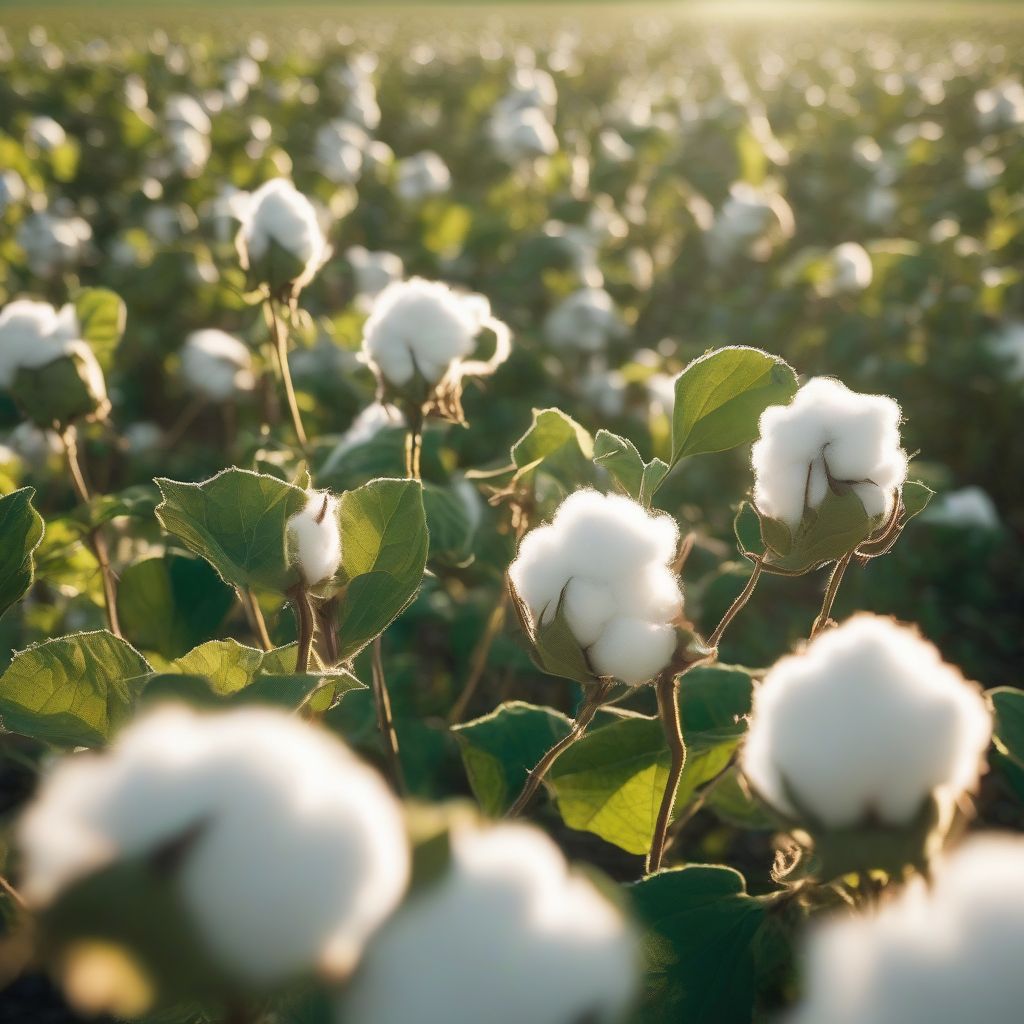Imagine slipping into a shirt that feels as soft as a summer breeze, knowing that it wasn’t made at the expense of our planet. That’s the promise of eco-friendly fabrics and sustainable materials—a future where fashion and responsibility walk hand in hand.
As a nutritionist and meal prep coach, I understand the power of conscious choices. Just as we nourish our bodies with wholesome foods, we can clothe ourselves in materials that respect the environment. The fashion industry is undergoing a significant transformation, driven by a growing awareness of the environmental and social impact of traditional textile production. Consumers are increasingly seeking out sustainable alternatives that are both stylish and eco-conscious. This shift in consumer behavior is fueling the rise of eco-friendly fabrics and materials that minimize harm to the planet. Let’s delve into the exciting trends shaping a greener future for fashion:
Natural Wonders: Plant-Based Innovation
Organic Cotton: The Reigning King
 Organic Cotton Field
Organic Cotton Field
Organic cotton has earned its place as a staple in sustainable fashion. Grown without harmful pesticides and fertilizers, it’s gentle on the skin and the earth. Look for certifications like GOTS (Global Organic Textile Standard) to ensure its authenticity.
Linen: Breezy and Biodegradable
Derived from the flax plant, linen is a natural powerhouse. Its breathable and moisture-wicking properties make it ideal for warm weather. Plus, it’s biodegradable, returning to nature without a trace.
Hemp: Durable and Versatile
Hemp is making a comeback, and for good reason. This fast-growing plant requires minimal water and pesticides, making it an eco-warrior. Its fibers are strong and durable, perfect for everything from clothing to accessories.
Recycled Revolution: Giving Materials a Second Life
Recycled Polyester: Transforming Waste into Wearables
Plastic bottles taking over landfills? Not on our watch! Recycled polyester turns post-consumer plastic into a versatile fabric that’s kind to the planet.
Econyl: From Ocean Waste to Swimwear
Imagine swimming in a swimsuit made from discarded fishing nets! Econyl makes it possible by regenerating nylon waste into a high-quality fabric.
Innovative Materials: The Future of Sustainable Style
Piñatex: Leather from Pineapples
Who knew pineapples could be so stylish? Piñatex, a leather alternative made from pineapple leaf fibers, is both innovative and sustainable.
Mushroom Leather: The Future is Fungi
Mycelium, the root structure of mushrooms, is being transformed into a durable and luxurious leather alternative that’s taking the fashion world by storm.
Orange Fiber: Citrusy Chic
Don’t toss those orange peels! Orange Fiber extracts cellulose from citrus waste to create a silky and sustainable fabric.
Choosing Wisely: Navigating the World of Eco-Friendly Fabrics
With so many exciting innovations, it’s an exciting time to embrace sustainable fashion. Here’s how to navigate the world of eco-friendly fabrics:
-
Read the Labels: Look for certifications like GOTS, OEKO-TEX, and Fair Trade to ensure ethical and sustainable practices.
-
Choose Quality over Quantity: Invest in well-made pieces from brands that prioritize sustainability.
-
Care for Your Clothes: Proper care can extend the life of your garments, reducing your environmental impact. Discover how to care for eco-friendly fabrics.
-
Embrace Secondhand Style: Give pre-loved clothing a new life by shopping secondhand.
The Future of Fashion: A Collective Effort
The shift towards sustainable fashion is a collective effort. As consumers, we have the power to influence change by choosing eco-friendly fabrics and supporting ethical brands. Learn how to find and shop for ethical fashion brands that align with your values. By making conscious choices, we can all contribute to a greener and more stylish future. Let’s make fashion a force for good, one sustainable garment at a time.
Conclusion
The world of eco-friendly fabrics and sustainable materials is a testament to human ingenuity and our commitment to preserving the planet. From plant-based wonders to recycled innovations, the choices are expanding, offering both style and sustainability. As we embrace these trends, we’re not just changing our wardrobes—we’re weaving a greener and more responsible future for the fashion industry. Let’s continue to explore, innovate, and create a world where fashion and sustainability go hand in hand.
What are your favorite eco-friendly fabrics, and how do you incorporate sustainable practices into your wardrobe? Share your thoughts and let’s inspire each other on this exciting journey toward a more conscious and stylish world!
[amazon bestseller=”sustainable fashion”]
